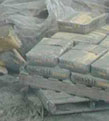What is silica?
Silica is one of the most common minerals in the earth’s crust. Glass, beach sand, silicone, and granite are all silica materials. There are two forms of silica – crystalline and noncrystalline. Crystalline silica is a bigger worry for the health of our lungs.

The most common form of crystalline silica is quartz, which is found in sand, gravel, clay, granite, diatomaceous earth, and many other forms of rock. Non-crystalline silica is found in glass, silicon carbide, and silicone. These materials are much less hazardous to the lungs.
When we talk about silica exposure we are talking about crystalline silica or quartz. Construction workers could be exposed to silica when cutting, grinding, drilling, sanding, mixing, or demolishing materials containing silica.
The size of the airborne silica particles determines the amount of risk. Smaller particles can be inhaled deep into the lungs where they can cause damage. Larger particles, such as beach sand, are not as great a concern because they are too large to inhale.
